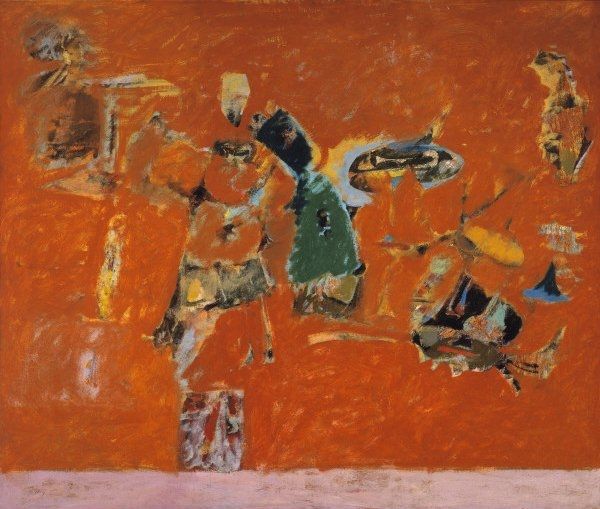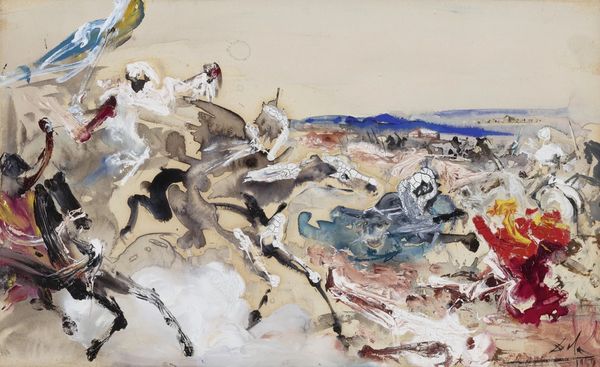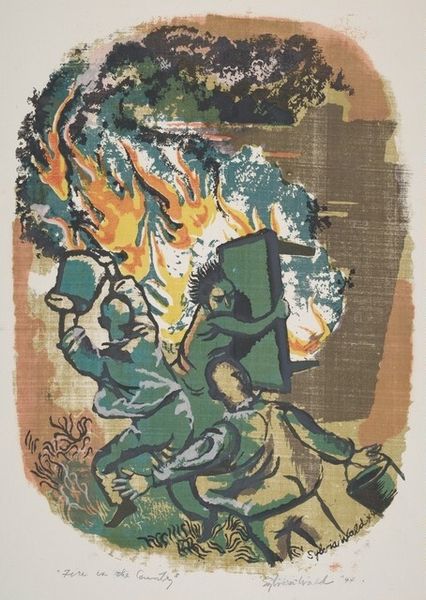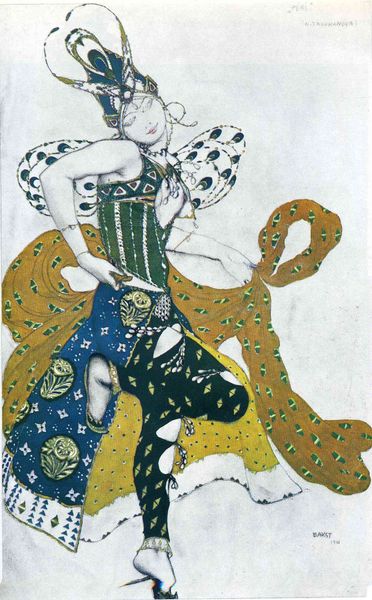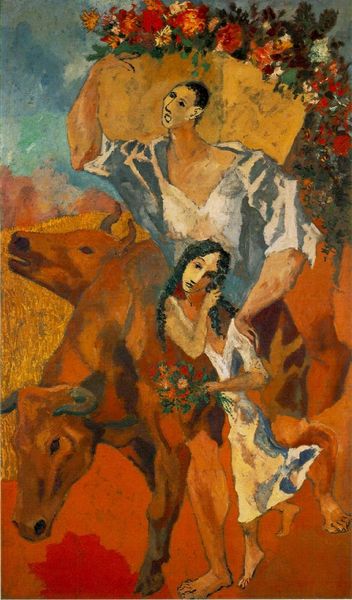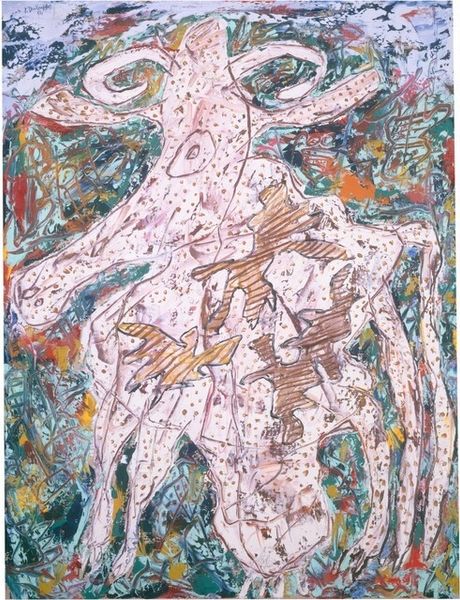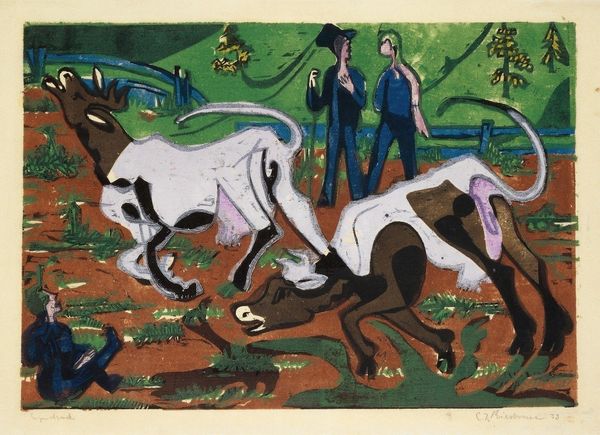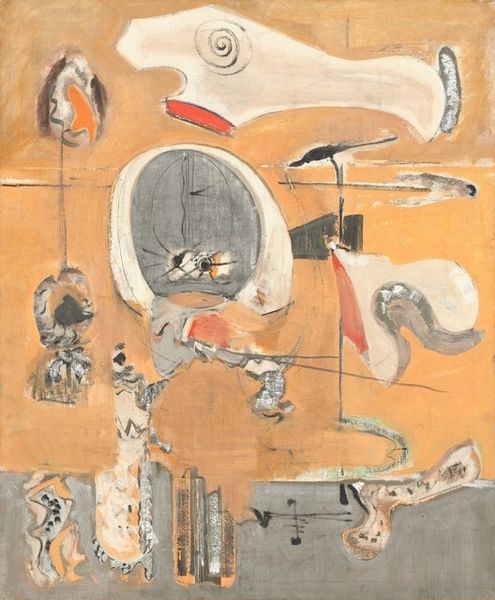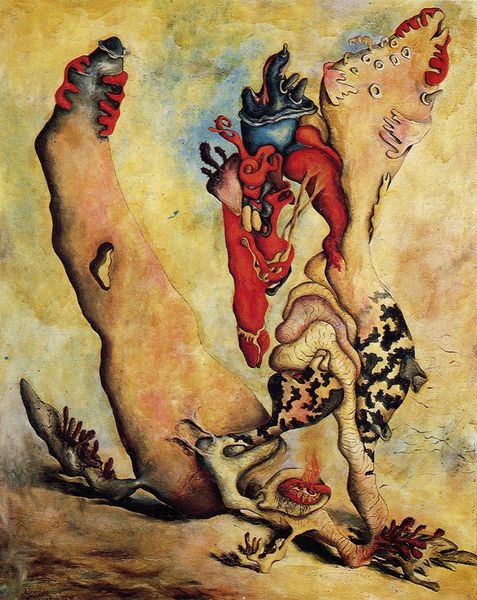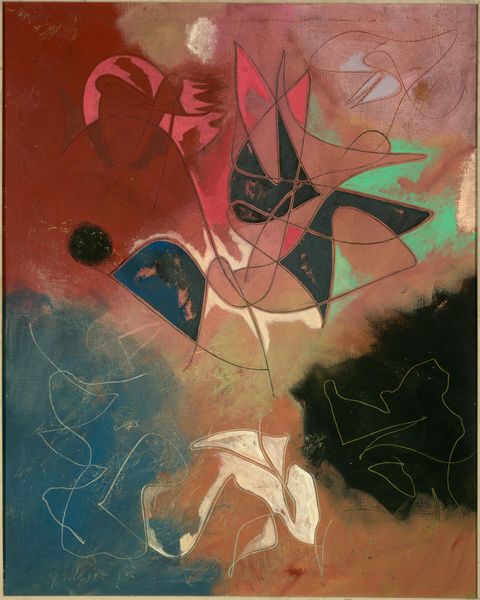
painting, oil-paint, impasto
figurative
painting
oil-paint
landscape
figuration
oil painting
impasto
genre-painting
post-impressionism
Copyright: Public Domain: Artvee
Editor: Here we have Henri de Toulouse-Lautrec's "At the Circus Fernando, Medrano with a Piglet," painted sometime between 1884 and 1894, using oil paint. The stark lighting and unconventional composition create an atmosphere that feels both lively and slightly unsettling. What do you see in this piece? Curator: Beyond the circus spectacle, I see a commentary on class and performance. Toulouse-Lautrec often depicted marginalized communities, and the circus was no exception. This painting can be read as an observation on the ways people, including animals, were put on display for entertainment, and how this commodification intersected with societal hierarchies. Consider the spectators in the background—are they merely observers, or are they complicit in this spectacle? Editor: That's fascinating! I hadn't considered the element of social commentary. How does the depiction of the piglet contribute to this interpretation? Curator: The piglet is key. It embodies vulnerability and exploitation, forced to perform for the amusement of others. In many ways, the piglet mirrors the situation of other performers –perhaps even echoing the experiences of individuals from lower social strata who felt compelled to entertain to survive. It invites a reflection on power dynamics. Editor: It's amazing how much can be unpacked from a seemingly simple circus scene. Thank you! I will definitely remember this perspective as I explore more of his work. Curator: Indeed. By analyzing the socio-political contexts of the artwork, we gain deeper insights into both the artist's intent and the society he portrayed.
Comments
No comments
Be the first to comment and join the conversation on the ultimate creative platform.
